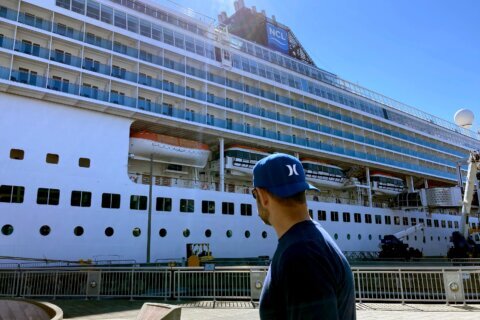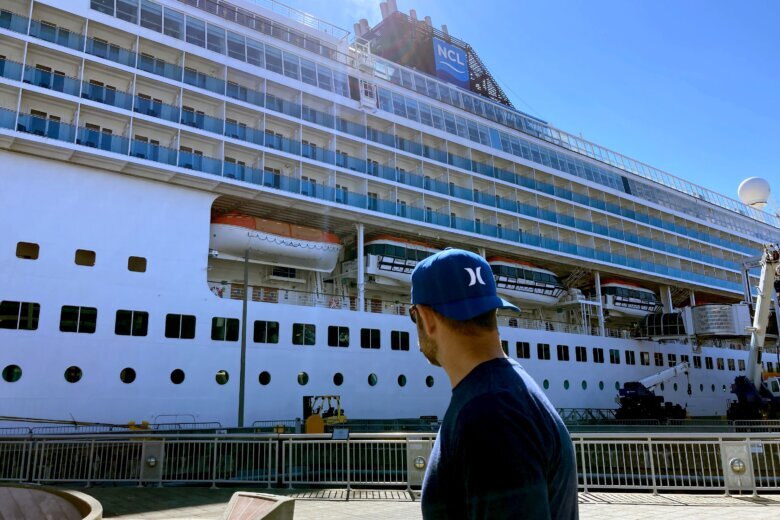
If you enjoyed cruises during vacations, it may be appealing to think about moving onboard permanently in retirement. Cruising has become increasingly accessible during the last decade and continues to provide a somewhat leisurely mode to explore the world. While the idea of setting sail and enjoying a plethora of amenities can be attractive, there are logistics to consider before signing up for long-term cruising.
To investigate retirement on a cruise ship, you’ll want to:
— Understand what’s involved with the lifestyle.
— Look at your finances and set a budget.
— Review options for the services you need.
— Consider how your social life will be impacted.
— Outline your priorities and talk to family.
Use the following information as a starting point to help you decide if you should spend your retirement years on a cruise ship.
[See: The Best Places to Retire Overseas]
How to Retire on a Cruise Ship
Living as a retiree at sea isn’t as simple as purchasing a ticket and stepping on board. There are many different routes, trip lengths, price points and ship sizes to consider. If you’ve never been on a cruise, you might try out several to see if you enjoy the rhythm and are comfortable at sea. For those who have only gone on short-term cruises, such as weekend getaways or weeklong trips, it might be beneficial to try out a three-month cruise to see if an extended trip is still enjoyable.
John and Melody Hennessee from Port Salerno, Florida, decided to travel during their retirement years. They have settled on cruising, and even became owners of a residence on Storylines MV Narrative, a residential ship in development and set to sail in 2026. The ship is designed to enable global citizens to carry out a healthy and active lifestyle while traveling throughout the world. “It’s so special to live out this dream every day while getting to see and hear the ocean,” they say.
Before retiring on a cruise ship, go through your belongings on land and aim to downsize. Also think through your health conditions, and if you’ll be able to get medical assistance if needed.
Cruise Ship Retirement Options
You might aim to spend your entire time sailing on one ship, or you could move around. Some cruise lines offer cabins for sale, allowing you to own your place at sea. Other ships accommodate extended trips, such as 180 days or more.
You also need to decide what to do about your current housing situation. You might rent your home while you set sail or divide your time between cruising and living on land. While it’s possible to sell your residence and permanently commit to the cruise life, you’ll want to think about long-term options, such as what you’ll do if you go cruising for a year and then want to settle somewhere else.
[See: Top Travel Destinations for Retirees]
Cruise Ship Retirement Costs
The amount you spend on cruising will depend on where you want to travel and the amenities you choose. “Rates are negotiated based on duration, cabin type and past passenger status,” says Annie Scrivanich, senior vice president of Cruise Specialists, which is headquartered in Seattle.
The average cruise fare in 2023 ranges between $130 and $260 per day, according to Cruzely.com data. However, factors that impact price include the cruise line, the ship, the dates of your cruise, cabin type and trip length. There is also spending to consider, and you might be able to get a discounted rate for long-term travel.
You can monitor travel sites to watch for price drops. Also contact the cruise line to ask about services for long-term guests, such as arranging for family and friends to join you occasionally or allowing you to go home for a special event and then rejoin the ship.
Pros of Retirement on a Cruise Ship
If you love to see new places, cruising provides an opportunity to see the world, especially areas where you might not otherwise venture. “With longer-term cruising, specifically those trips that last weeks or months, you get to visit faraway places that can’t be reached on shorter cruises,” says Tanner Callais, founder and editor of Cruzely.com, based in Austin, Texas.
“There are around-the-world cruises that last months and can take you to Asia, Europe, South America and all points in between,” Callais says.
You might develop new and unique relationships on board. Over time, you will likely become familiar with the ship’s crew and may feel a sense of belonging. Due to your extended presence, “you’ll receive extra care and attention while on board the ship,” Scrivanich says. “You will be able to enjoy resort-style living surrounded by fellow travelers with similar interests.” Readily available entertainment and excursions could provide opportunities to socialize and stay active.
The carefree retirement lifestyle could be attractive too. “There is no home maintenance, meals to prepare, house to clean or any other of the daily chores that take up so much time,” Callais says.
[Related:How to Retire on $500K]
Cons of Retirement on a Cruise Ship
Staying close to family and watching grandchildren grow could be difficult when you’re at sea for months or years at a time. You might also grow weary of the frequent stops cruise ships make, along with your lack of control over the time spent at ports. For instance, you may want to tour a city for a full week, but the ship might only stop for two days. With unlimited food and drink available, it could be hard to maintain a goal weight.
If you’re interested in a side job during retirement, in-person work opportunities could be limited. You might be able to work remotely if there is steady Wi-Fi available.
There are also medical considerations to keep in mind. “A prospective shipboard retiree must be in good health, as the cruise lines certainly aren’t equipped to function as an assisted living facility,” says David Yeskel, a travel journalist known as The Cruise Guru and based in Santa Monica, California.
Medicare coverage is limited outside of the United States, and it won’t pay for health care services provided when the ship is more than six hours away from a U.S. port. You may have to purchase private health insurance for travel. While there are basic medical services on board cruise ships, they tend to focus on emergency care, which could make regular checkups difficult to schedule.
More from U.S. News
The Cheapest Places to Retire Abroad on $1,000 Per Month
Best Places to Retire Overseas Where English Is Spoken
Top Travel Destinations for Retirees
How to Retire on a Cruise Ship originally appeared on usnews.com
Update 08/08/23: This story was published at an earlier date and has been updated with new information.








